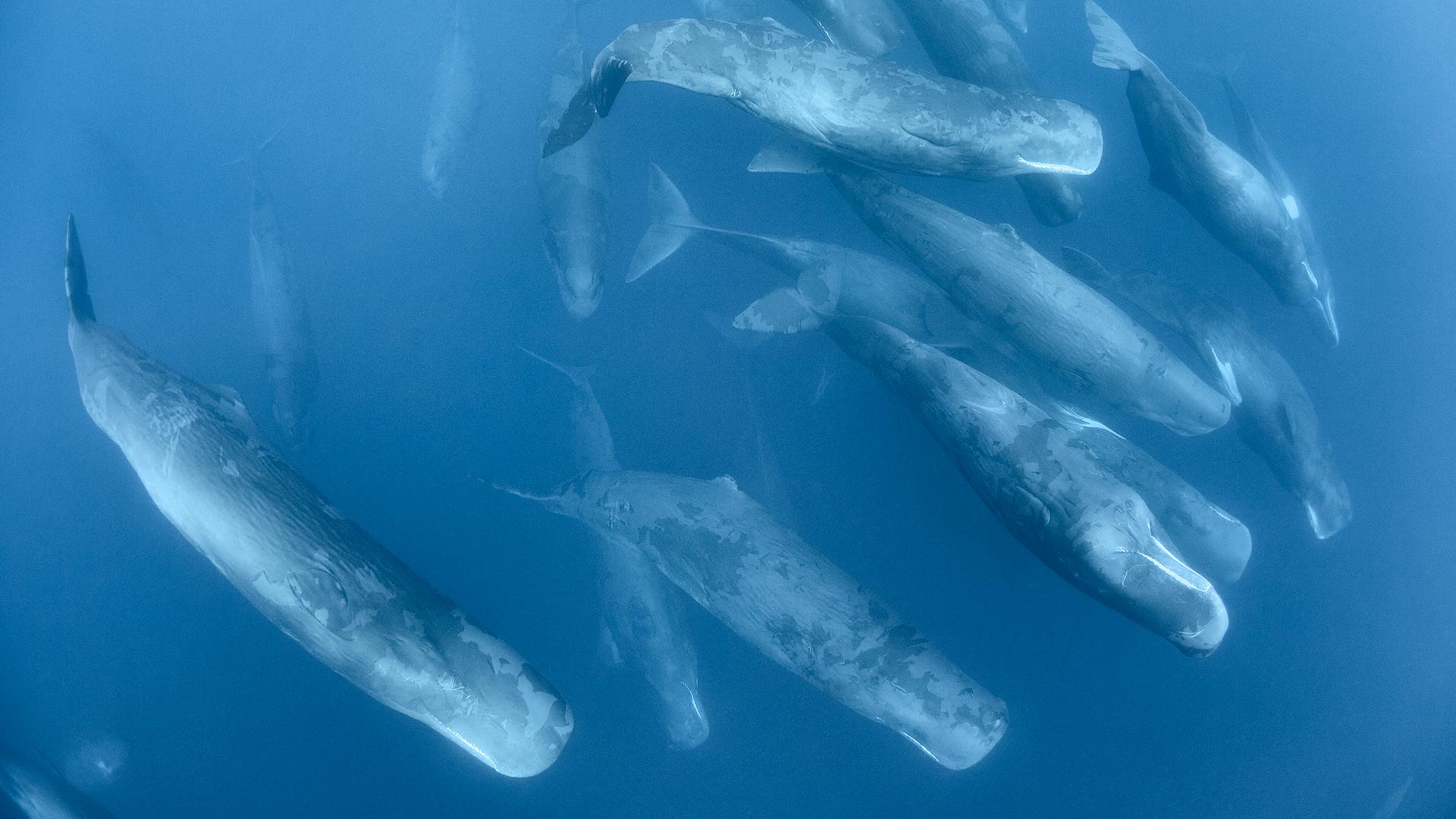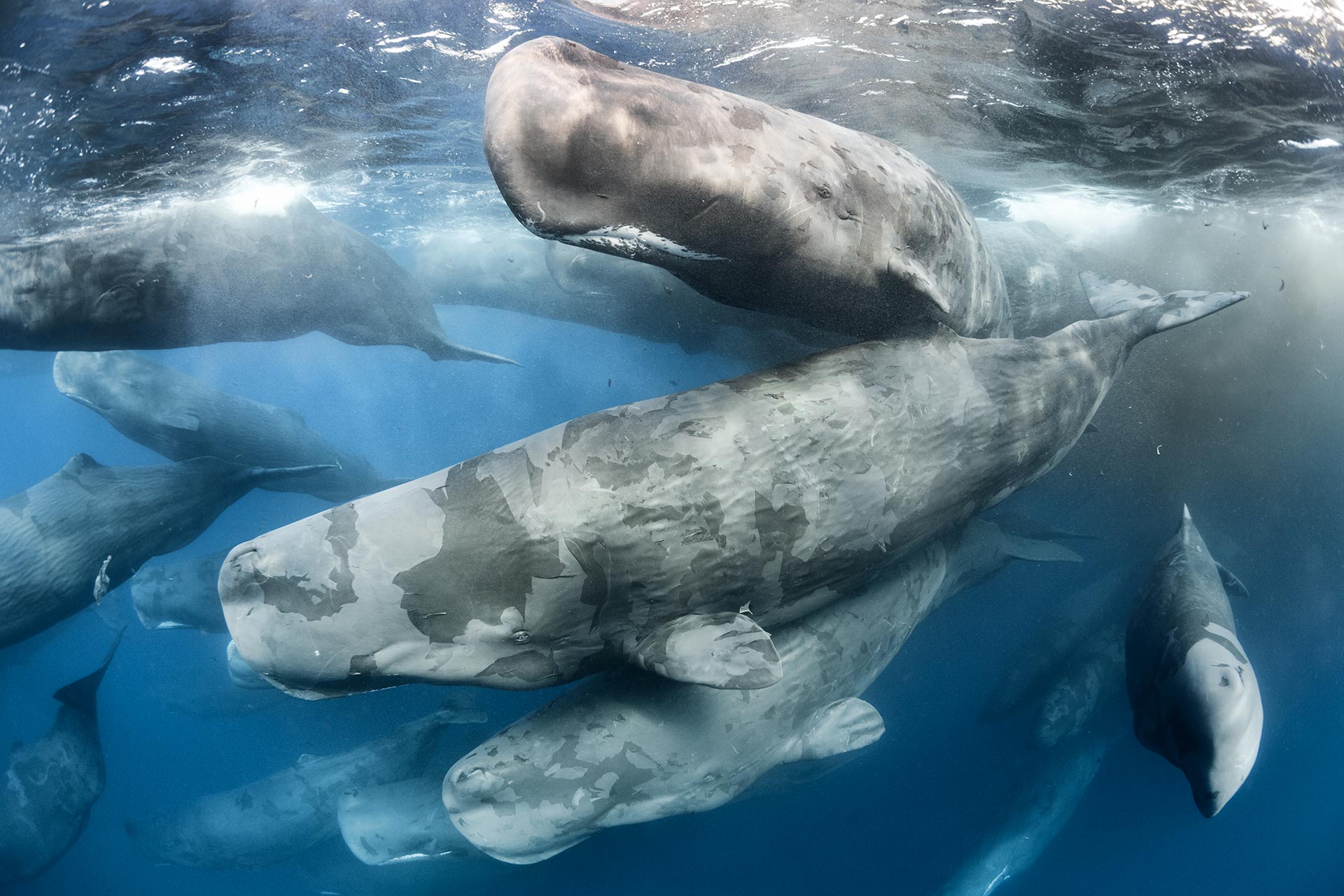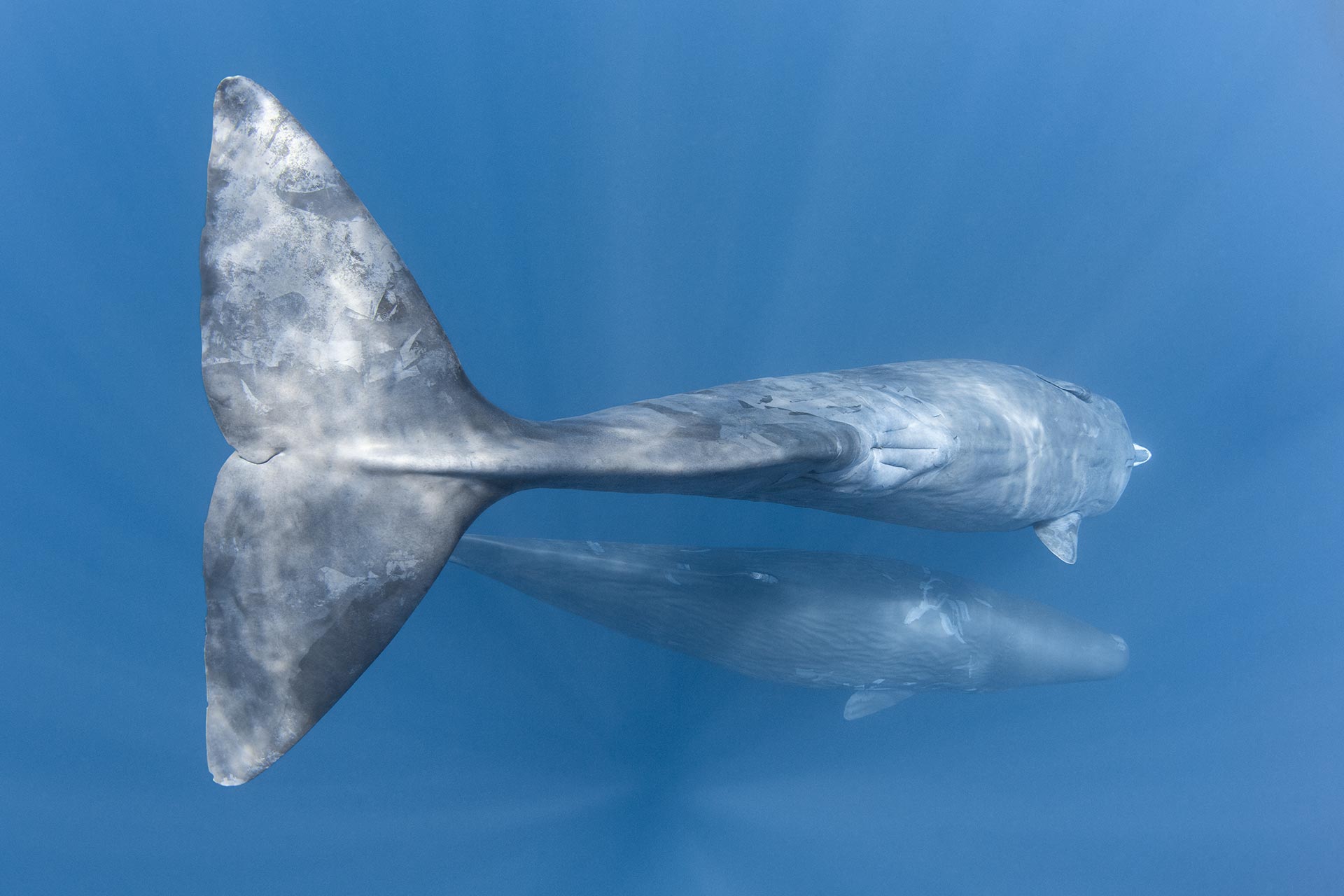
The primordial sound of the deep
Exploring the extraordinary ways animals communicate in a world beyond human senses
by Nicolò Porcelluzzi
Photo by Tony Wu — These whales are part of a much larger aggregation comprising hundreds, if not thousands, of individuals. The gathering of giants persisted for more than two days, with whales spread out in all directions.
It begins with a seemingly simple question: how do animals communicate? They do it through sounds, songs, scents, dances, decorations of space and body: these are all forms of communication that are used to transmit codes, that is, information. The living world is based on this continuous transmission of information.
We are now used to living in cities or highly urbanized areas. Sound has become the main point of contact between us and them, the interface between humans and the animals that are not humans. But if you start to explore beyond that boundary, you find that things are much weirder than we tend to believe.
Take the most common class of animals on Earth: insects. If you read An Immense World by Ed Yong, you will find that crickets have ears on their knees, cicadas and grasshoppers on their abdomens, mosquitoes hear with their antennae, and mantids have a single ear in the center of their thorax. There are insects that have six pairs of ears along their abdomen. We’re used to thinking of ears “on the sides of the head” because that’s how we are: but ears go where it’s most convenient because they’re used to listen for predators.
Many butterflies have ears on their wings, tuned to the frequencies made by predatory birds. In fact, many species of butterflies are silent. They don’t make noise of their own, so they don’t need to listen to each other: their hearing is only for listening to everything that’s different from them. At least they hear something. Dragonflies and almost all beetles do not have ears. In fact, here’s a surreal piece of information: as far as we know, most insects are deaf. That means that most of the animals on Earth could be deaf.
Our concept of sound is very limited. However, there is a possibility to expand this concept by giving it value as an interface. To do so, we will try to understand how some animals that live on Earth — and especially in the planet’s largest territory, the oceans — have been communicating with each other for 60 million years. We will rely on the language of dolphins, humpback whales, and sperm whales, and the network of sounds that surround them.

Photo by Tony Wu — Four sperm whales hang gracefully head down in the water, engaging in a fascinating display of social interaction. Known for their tactile nature, these whales often make physical contact with one another. As they rub their heads and bodies together, they produce distinctive clicks and sounds, creating a rich tapestry of communication within their group.
A matter of touch
It may sound strange, but hearing is a matter of touch. This might seem odd to us because we perceive sound as something ethereal and ephemeral: instead, it is something that excites our sensory machinery. Sound, in the sense of the movement of the world outside our brain, stimulates receptors that, in turn, generate electrical signals. In our case, as humans, the receptors are the hair cells embedded in our ears.
Sound does not necessarily need surfaces: it travels through air and even more easily through water, which is 800 times denser. In fact, sound travels four times faster through water than through air. That’s how we got sonar, which is an imitation — although in these cases, we should say biomimicry — of what’s called echolocation in the animal world.
Over millions of years, very different species have found similar solutions to similar problems: the echolocation of dolphins is not too different from that of bats because there is a simple idea behind it: if you fire a sound at a wall or an object, it will bounce back, and you can tell how far it is from the delay of the echo.
In such cases, the individual shoots sound out into the world to communicate with itself. When we use this biological sonar, we build a mental representation of something that is hidden: it is like reaching out with long arms into the environment and feeling what is around us, both visible and invisible.

Photo by Tony Wu — This photograph, winner of the Behaviour: Mammals category at the 53rd Wildlife Photographer of the Year competition in 2017 organized by the Natural History Museum in London, captures a moment when whales emerge from their social group and swim past.
To get an idea of how the interface that connects sperm whales to the ocean works, I interviewed biologist Biagio Violi:
“A sperm whale’s head is one-third of its total body length. Within the whale’s head lies the spermaceti organ, which is fundamental for phonation but also important for buoyancy and to enable the animal’s ascent and descent. The spermaceti organ is bounded at both ends by air sacs. The frontal sac is located between the whale’s skull and its spermaceti organ. The distal sac, in front, is just below the whale’s blowhole. Air is present in the sacs, and the phonic lips are located just behind the distal sac. Sound is generated in this area and starts to travel, but not ‘forward.’ It doesn’t come out of the animal’s head right away. Or rather: part of it certainly comes out, but another part goes back towards the skull and reaches the frontal sac, where it is amplified and turned back forward.”
This coming and going generates the loudest sound in the animal kingdom. It can reach around 240 decibels, almost twice our tolerance threshold. The sperm whale’s head emits vibrations that travel out into spheres of kilometers and kilometers. Their sonar is produced in the same head that contains the largest brain on the planet: a brain that weighs 9 kilograms, 7 times larger than ours. In short, when we talk about sperm whales we are talking about a series of anomalies: they are the last survivors of a family of cetaceans that lived for twenty million years, and they are the largest creatures in the world with teeth. This ability is accompanied by a complex social life.

Photo by Tony Wu — This group comprised dozens of individuals that were busy clicking, blowing bubbles, rubbing their bodies against one another, and diving to forage for food.
I talked about this with Carl Safina, an American biologist but more importantly a great science writer who has devoted his life to studying the behavior of other animals, their cognitive abilities, and their emotional and affective lives.
The first part of his book Animals Not Humans is devoted to sperm whales. To their social network, their intelligence, and their language. Regarding the latter, we can say that the sperm whale’s basic sound is always the same, namely their click. What changes its use and meaning is the way it is emitted. As a first step, I asked Safina to help us differentiate these uses:
“The first use is for hunting: sperm whales use clicks as a sonar, to hunt. They make a click, which is the loudest sound a living thing can make. They listen for the return echo, and thanks to that, they are able to hunt in their dark environment, hundreds or thousands of meters below the surface, by emitting two clicks per second. While dolphins use their sonar to scan the ocean like a flashlight, sending a beam of light back and forth through a sea of obstacles, sperm whales fire their signal like a laser into the void of the miles of ocean it swims through every day.”
So: the first use of clicks is related to hunting, looking for more or less giant squid. The other use of clicks, on the other hand, is related to sociality, to nurture relationships.
“These clicks form patterns that researchers call coda. It is like Morse code, to be clear. They use a simplified code, with three patterns for three situations: one for when they come up from deep water after hunting, one for when they float on the surface with members of their family, and one for when their family approaches another one. And these messages say ‘This is me.’ The pattern expresses their name, a kind of personal reference: I belong to this family or that family. The second one explains which family they are talking about, and the third one identifies which group the family belongs to.”

Photo by Tony Wu — A female sperm whale commences a dive after spending time at the ocean surface to replenish her air supply. The two other whales are part of a social unit foraging for food in deep water.
We have only scratched the surface of the interface of animal communication. Just as sperm whales use sound to reach each other across great distances, humpback whales sing for hours across hundreds of miles of ocean, and dolphins recognize each other by their distinctive whistles. They weave the sea of life into songs, and have done so for millions of years.
On this planet, divided between land and sea, we are the other world. We are the new ones, the aliens, the invaders. Just as the coda of sperm whales, the songs of humpback whales are older than any human language; indeed, they are older than any human civilization, palace or temple, any bone, or even remotely human artifact.
It happens every day, even right now: somewhere in the ocean, a newborn sperm whale baby is snoozing on the surface while its mother searches for food in the icy depths half a kilometer below. They are far apart, but they reach out to each other through their clicks, united by an amniotic language.
—
This article is an adaptation from the first episode of Sonar (a podcast produced by Il Post), which you can listen on Spotify.


